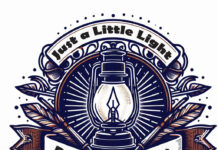LINDSBORG – As we climb out of winter’s dormant glaze, a look about our town will present moments that elevate the spirit: The little parks, offspring of the big ones, are rustling here and there, ready again for life; in short time they may be carefully tended, some nuzzling a hike or bike trail, beds and blossom-filled crannies in little neighborhood pockets. Pathways and water works and gardens on a college campus heightened charming trails, loops and groves. Pockets of beauty await in private gardens tucked along the alleys, peeking between houses, beyond a garage, a shed, a swing set. At town’s edge a canvass of cropland, the spiked wash of stubble against the horizon, the emerald promise in a wheat field.
*
February, that dark 3 a.m. of our calendar, is behind us, and here is March, with its annoying winds, its makeshift thermometer and landscapes turning, its renewed evidence that art unbridled comes at us in countless ways. A sunrise on Emerald Lake, a mural downtown, the Järnkors and band shell in Swensson Park, reveal art as critical to the way we live. It is natural to the climate ‒ as natural, say, as purple in Manhattan or politics in Topeka.
Covid has muffled our engagement but it has not throttled our enthusiasm. The 123rd annual Midwest Art Exhibition opens March 21 for two months at the Birger Sandzén Memorial Gallery, conjoining the Messiah Festival of the Arts, and with that and through summer we persevere with masks and distance and vaccines, and with concerts, classes, new exhibits, theater, artists-in-residence; this parade takes us to the big show in autumn, Hyllningsfest 2021. This biennial celebration of Swedish heritage, its history of more than 150 years, is ingrained in the arts; the settlers came here with only a few clothes, their will, and their hymnals. Music sustained them and it has invigorated students, practitioners and professionals since.
Even the municipal swimming pool, with Thor’s Revenge, speaks of art, the great winding structure, its young performers sloshing and swooping down and around, a wet and bold ballet.
The arts spring up in the way a place looks (its homes, its shops, its streets); how it acts (its grace, its turn of mind); how it worships (the message, its music); and in the way it fosters a gentle, modest embrace of beauty in so many forms as essential – sometimes instinctive – in a community that is at home with itself.
Here the arts are assuasive, a kind of sedative, bringing together the shattered fragments of all our comings and goings, our disparate lives, our common desires. They touch the element of pleasure that lives in all of us.
With less of the arts our world turns gray, and a hint of darkness looms. Without art, life is without color. Art shapes everything around us and about us – the way we dress, the music we hear, the paint on our houses, the look of our buildings, the view of a business district, the lay of a neighborhood, the form of our churches and schools inside and out.
The importance of art can be found in sport: the design of a stadium, the colors of uniforms, the carriage and sound of a band. And nothing spoils the opening of a game like the butchering of our National Anthem, or the painful blast of a jumbotron. We are pained by such assaults because art instills in us a reverence for beauty.
Lindsborg and many other cities were built on the message and music of religious faith; and within their graceful buildings and elsewhere we find the radiance of grand murals and reliefs, the stunning unfolding of nave, altar, pew and pulpit.
This is art, this is belief. Without art, life is sullen, ordinary.
The settlers knew, and later generations have learned, that through the arts we can experience a reassurance, a promise of re-entering old outposts and finding new ones, the experiences of childhood and adolescence that have shaped so much of our world and our appetite for new ones. The arts help us to remember them anew, with the artist our companion guide. We return to the scenes of those experiences, knowing that here lies the difference between seeking color in our lives, and the suffocation that comes without it.





